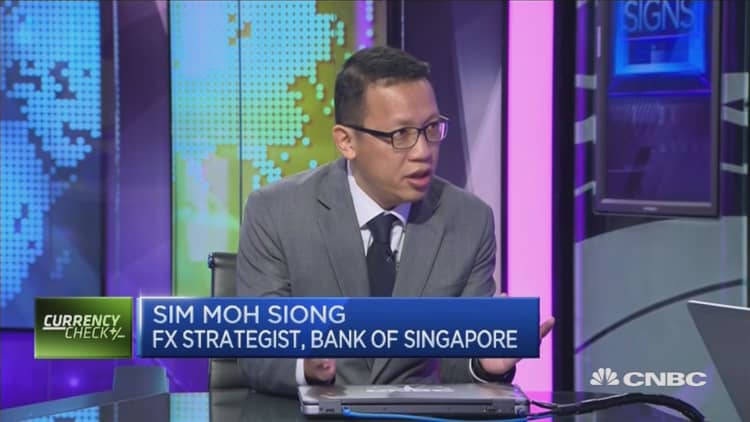The euro surged more than 1 percent against a broadly weaker dollar on Tuesday, rising above $1.10 to reach its highest since Donald Trump was elected U.S. president in November.
The dollar fell after the release of lower-than-expected data on U.S. housing starts, adding to a list of U.S. economic reports that have missed predictions to the downside.
Data released earlier in the day showed the euro zone growing at 1.7 percent year-on-year in the first quarter, in line with expectations.
The election of Emmanuel Macron as president of France and growing expectations of further European integration as he seeks deeper ties with Germany have also helped bolster the euro, analysts said.
European reconciliation has come along with stronger data, improved prospects for a Greek bailout package and talk that the European Central Bank is looking to reduce its quantitative easing program, said Douglas Borthwick, managing director at Chapdelaine Foreign Exchange.
"The euro has been behind the curve in terms of the dollar weakness story, and now its just playing catch-up," Borthwick added.

A French debt sale that drew 30 billion euros might also have spurred euro buying.
The dollar was hampered by news that Trump disclosed highly classified information to Russia's foreign minister.
Fears are growing among investors that Trump might not last his first term, analysts said. Even if he does, they said, there would be too many political distractions for him to push through his economic stimulus program.
"(The story about Trump and Russia) probably is playing out as a weaker dollar on the view that Trump may not be around long enough to deliver his tax reform, which is at least partially priced into the dollar," said RBC Capital Markets currency strategist Adam Cole, in London.
The dollar index had risen to 14-year highs earlier this year on the view that Trump's plans for tax cuts and infrastructure spending would boost growth and inflation, but it fell to six-month lows on Tuesday.
The weaker-than-expected data is causing traders to wonder whether the U.S. Federal Reserve will fail to deliver the June rate increase.
Investors are still pricing in around a 74 percent chance of a June hike, but that is down from more than 80 percent last week, according to CME Group's FedWatch tool.

